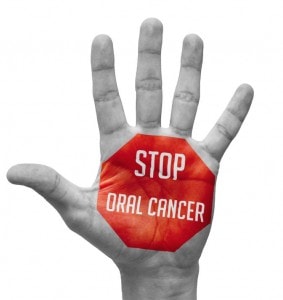Our office performs a free oral cancer examination at routine check-ups by looking for certain indicators and palpating (feeling) for lumps or irregular tissue changes in your mouth and head and neck. We will biopsy any suspected areas. Treatment for oral cancer is surgical removal of the lesion; sometimes radiation therapy is utilized.
If you cant come for regular 6-month check-ups, you can perform self-examination to look for early warning signs. Basically, you are looking for anything out of the ordinary, especially a lump that increases in size, a sore that doesnt heal within two weeks and changes in the appearance of soft tissue. Other early warning signs are persistent bleeding from the throat or mouth, difficulty swallowing, constant hoarseness and numbness anywhere in the mouth. To perform your own oral cancer examination, start in one area and consistently follow a pattern of observation and palpation.
• Face and neck – using a mirror and your nose as the dividing line, look for lumps or swellings that appear on only one side. See if there are any size or color changes in moles or other growths. With your fingers, press the sides and front of your neck, feeling for lumps or tenderness.
• Lips – Pull your lip down or up to observe any sores or color changes. Run your lip between your thumb and forefinger, feeling for lumps or changes in texture.
• Cheeks, roof of the mouth, floor of the mouth, tongue, and gums – Look for red, white or dark patches or open sores. Feel for lumps and bumps.
Oral cancer is painless in the early stages. With early discovery and treatment, survival rates greatly increase. If you detect these early warning signs, call or see us immediately.
Article originally posted on: https://goo.gl/BhiNF9

